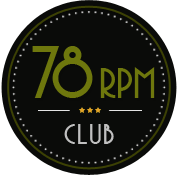<a href="https://78rpm.club/wp-content/uploads/2014/06/Grand-Busy-Bee.jpg"><img class="alignright size-thumbnail wp-image-2765" src="https://78rpm.club/wp-content/uploads/2014/06/Grand-Busy-Bee-150x150.jpg" alt="Grand Busy Bee" width="150" height="150" /></a>Im Jahre 1904 gründeten Arthur J.O’Neill, Winifried B.James und Sherwin N.Bisbee in Chicago die Firma „O’Neill-James Company“. Verkauft wurden vorerst billige Phonographen der Marke „Columbia“. O’Neill war ein geschäftstüchtiger Händler, der Verkaufstände in den grossen Warenhäuser der Stadt betrieb. Schon bald brachte man eigene Apparate mit dem Label „Busy Bee“ auf den Markt. Diese Bezeichnung wurde aus dem Namen des fleissigen Bisbee abgeleitet, und es entstand eines der wohl schönsten Labels; das Bild des Bienenstockes mit fleissig arbeitenden Bienen.
<a href="https://78rpm.club/wp-content/uploads/2014/06/Grand-Busy-Bee-01.jpg"><img class="alignleft size-medium wp-image-2766" src="https://78rpm.club/wp-content/uploads/2014/06/Grand-Busy-Bee-01-300x233.jpg" alt="Grand Busy Bee 01" width="300" height="233" /></a>Das Modell „<a class="encyclopedia" title="Im Jahre 1904 gründeten Arthur J.O’Neill, Winifried B.J..." href="https://78rpm.club/wiki/grand-busy-bee/" target="_self">Grand Busy Bee</a>“ wurde nur in den beiden Jahren 1906-1907 hergestellt. Es ist mit einem langen, frei schwebenden Blumentrichter, Durchmesser 49 cm ausgerüstet. Damit der Ton ohne Verlust des Schalldruckes in den Trichter strömen kann, ist die Schalldose direkt an diesem befestigt. Die Schalldose wurde aus Aluminium angefertigt, einem Material, welches sich als äusserst fördernd für die Klangqualität erwies. Der Motor ist für seine Zeit sehr leistungsstark, und spielt ohne Probleme eine ganze Platte mit einmaligem Aufziehen der Feder durch.


